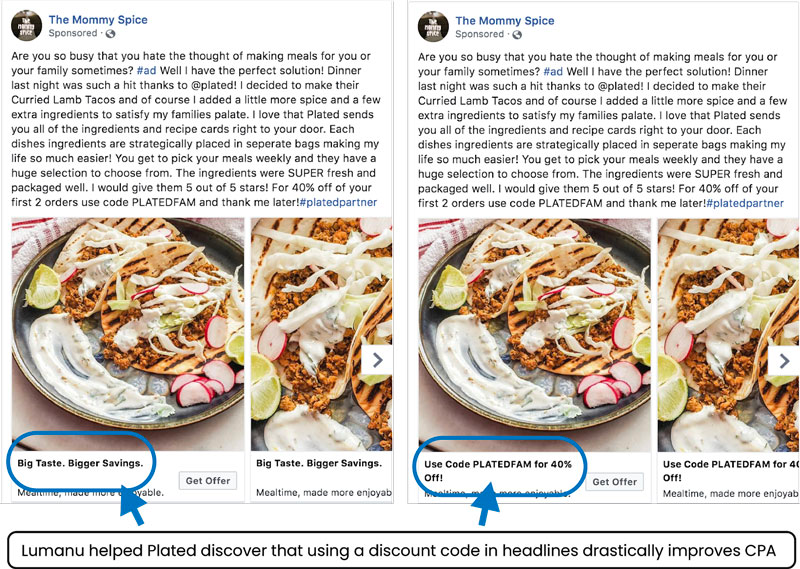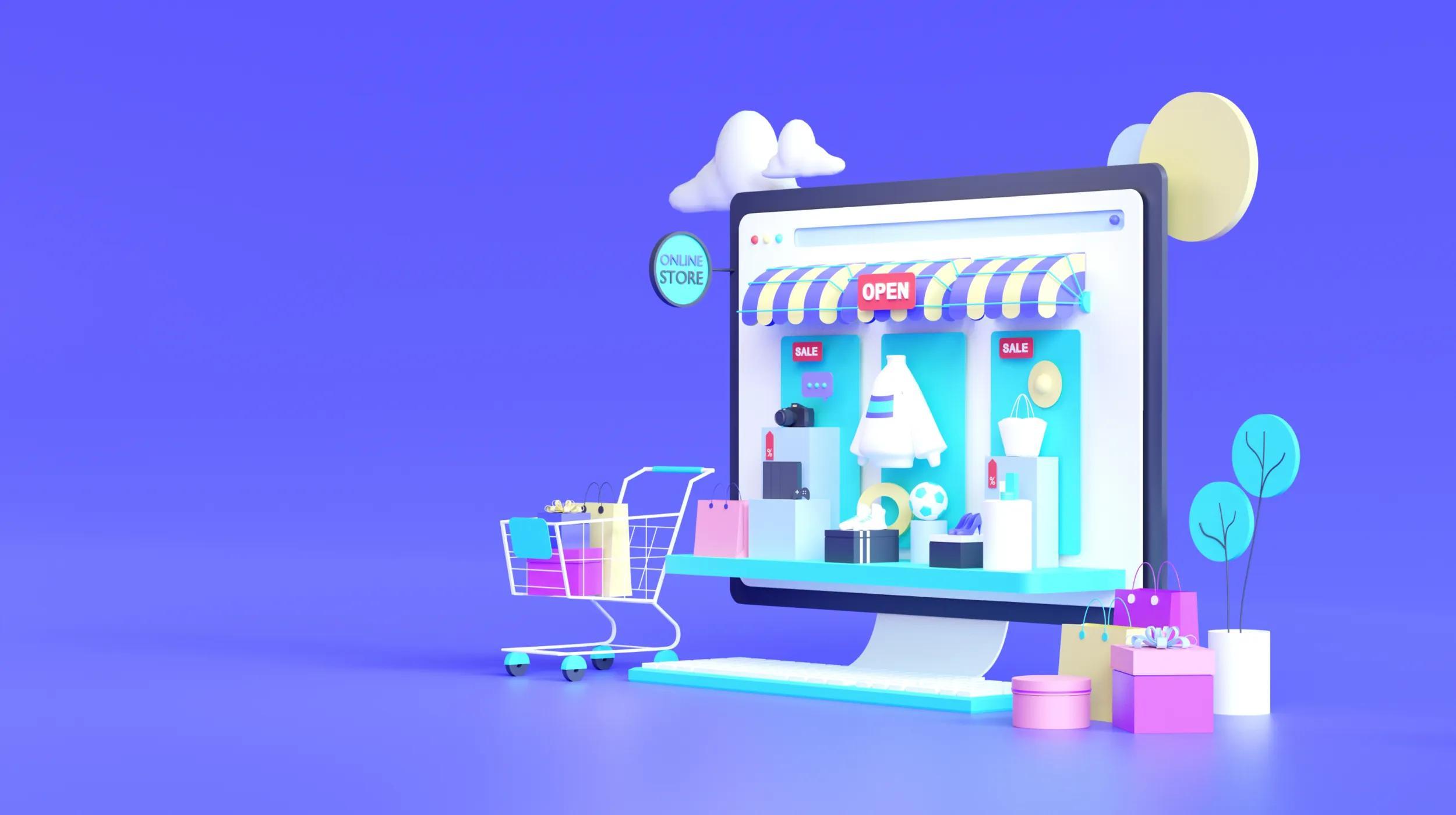I ran affiliate marketing at the ecommerce brand Tortuga for four years. And I need to level with you: There are dozens of articles on the difference between influencer and affiliate marketing, but a lot of them are straight-up lying. I don’t think they’re doing this intentionally. They were just written by people who have never been affiliate or influencer marketers. That’s not the kind of person you want advice from. And you don’t want to create a marketing strategy based on inaccurate representations of these two channels.
Influencer and affiliate marketing are powerful, cost-effective ways to reach your target audience and turn them into customers. But if you don’t understand each channel’s nuances, you could miss out on opportunities to grow your business. It’s not about pitting one channel against the other — but about identifying your goals and choosing an approach using one or both of these channels to meet those goals.
Here’s the real difference between affiliate marketing and influencer marketing, plus advice on how to choose which channel to use from someone who’s been there.
The difference between affiliate marketing and influencer marketing
Affiliates and influencers are both partnership-based marketing channels that can help you reach new audiences and shape their opinions about your brand. The main differences between the two channels can be seen in the goals you’re trying to achieve, the relationships your partners have with their audiences, and the kinds of partnerships you can create.
Let’s recap the definitions of each to pinpoint the differences between the channels.
Affiliate marketing is a type of marketing in which a brand partners with another person or company (the affiliate) to promote the brand’s products or services. For any sales referred by the affiliate, the brand shares a portion of the profits (also called a commission).
Influencer marketing is a digital marketing channel in which a brand partners with a person (the influencer) who has influential power over its audience. The influencer, also often referred to as a content creator, creates content that promotes the brand or its products. The brand and influencer agree on a payment model upfront, often based on the influencer’s audience size.
But affiliate and influencer marketing have a lot more overlap than they’re given credit for. Some brands have affiliate-style relationships with their influencers. While other affiliate and influencer campaigns look completely different from each other. So how do the two channels compare?
Affiliate marketing and influencer marketing can achieve different goals
The entire goal of an affiliate marketing campaign is to drive conversions. Often, the affiliate only gets paid if a sale is made. So the affiliate is incentivized to convince their audience to buy.
Influencer marketing is broader.
Though it’s often seen as a brand awareness play, influencer marketing can be used to reach goals across the entire marketing funnel, including making sales.
Affiliates and influencers can have different relationships with their audience
Influencers typically engage with their audience through social media platforms but can also be bloggers or have a personal email newsletter, for example. The defining factor here is that influencers are individual people who connect directly with their audiences.
The relationship affiliates have with their audiences can be different in many ways. Like influencers, affiliates can be individuals who speak to their audience directly. But affiliates can also be entire publications, websites and other entities that have a less personal relationship with their audience.
Affiliate campaigns and influencer campaigns can look different
Because of the different goals and relationships, affiliates and influencers can have, campaign implementation in these channels can also be different.
Regardless of the goal, an influencer marketing campaign will be some sort of direct communication with its audience.
When sharing about a brand, an influencer might dedicate a whole social media post to that brand, mention a product in a relevant context (like using a skincare brand’s face serum in their morning routine), or engage in a sponsorship with the brand (for example, delivering an ad read in a YouTube video that may be unrelated to the rest of the video’s content).
Because affiliate marketing isn’t necessarily about the personal relationship an influencer has with their audience, affiliate campaigns can be diverse in their approach.
Affiliates can feature products much like influencers do, though they can also feature partner brands in banner or display ads on their website. Affiliates can take advantage of SEO to rank for popular keywords and reach audiences that may be looking to purchase but might not be a part of the affiliate’s regular audience.
The organization's brands are partnering with as affiliates can also open up new ways to introduce your brand to their audiences. For example, there are websites and browser extensions that focus exclusively on giving their audience discount codes. There are no product recommendations or personal reviews of the affiliate using the products. It’s just discount codes. So these affiliates capitalize on the fact that a person knows they want the product but needs a nudge to draw them over the line.
There are exceptions
Your affiliate and influencer channels don’t have to live in separate boxes. At Tortuga, we had a lot of overlap.
Some of our affiliates promoted us on social media; some through a personal blog, podcast or newsletter. Some of them were paid just an affiliate commission; others were paid a flat fee upfront in addition to their commission. And some folks with a personal blog did have a following that they influenced over but also relied on SEO-optimizing their content to target people actively looking for travel gear.
Even though affiliate is a conversion channel, the affiliates who straddled the line between affiliate and influencer often created a full funnel of content to build brand awareness, engage their audience, and finally convert them into a Tortuga customer.
For example, a Tortuga partner with a blog might start by building brand awareness through a packing list for Morocco. In the packing list, they’ll recommend using a travel backpack and mention they use Tortuga. Then, the audience may be encouraged to learn more by reading a “best travel backpack” guide that recommends Tortuga as the blogger’s #1 choice. And finally, audience members can learn more about the blogger’s favorite Tortuga travel backpack through a full review that encourages the reader to purchase.
Your marketing channels are intertwined, and you need to create a cohesive customer journey, no matter what tactics and channels you use, even if you’re measuring them separately.
Use your goals to guide the tactics and channels you use
For any marketing strategy, you need an action plan based on the goals you’re trying to achieve. You don’t want to just throw money at influencers and affiliates without understanding how you’re trying to impact the business.
Connect influencer and affiliate marketing back to your goals, so you can determine what kinds of campaigns you want to run and who you want to partner with.
As you create your strategy, keep in mind that it’s not enough to partner with a content creator for a brand awareness or engagement campaign that leads nowhere. Everything needs to lead to conversions eventually. Every effort needs to lead a potential customer further down the marketing funnel. Where are you guiding new followers to encourage further engagement? How are you continuing and building that relationship to eventually encourage those people to buy from you?
Focus individual campaigns on specific goals. Then determine how each one fits into the rest of the customer’s journey to reap the benefits from your affiliate and influencer marketing efforts.
Brand awareness goals
Brand awareness is the highest stage of the funnel. It’s all about introducing people to your brand who’ve never heard of you before. Any partner you work with toward brand awareness goals is an influencer.
If you’re working with members of your affiliate program to boost brand awareness, you should be thinking of them as influencers at this stage. And because conversions aren’t the goal, it’s worth looking into alternative compensation models that account for the work they’re doing and not rely on a commission earned through conversions.
Here, supplement brand Nordic Naturals partners with health influencer Amanda Elyse.
Amanda introduces the brand to her audience alongside a health tip. Contextual posts like this help followers understand the value of a new brand and how it’s relevant to their lives.
Although affiliates are focused on earning their commission by encouraging purchases, many affiliates also create brand awareness content. This helps bring their audience down the funnel to a conversion. But brand awareness is not the goal of the partnership, so it usually looks different than influencer content.
For example, at Tortuga, we partnered with the travel blog Never Ending Voyage, which integrates the brand in a variety of content. Here, the traveling couple includes Tortuga in a packing list for Iceland.
This feature is more conversion-oriented than most brand awareness content you’d see from an influencer. The bloggers feature a picture of the product and a short description and use their affiliate link here in hopes that readers will buy, even if it’s the first time they’re being introduced to the brand.
Engagement goals
Engagement happens in the middle of the funnel. People in this stage have interacted with your brand in a way that indicates they are closer to making a purchase, such as subscribing to your email list or following you on social media. Effective partnerships in this stage could mean running multiple campaigns with the same content creators or reusing influencers’ content on your own social media profile.
As with brand awareness, purchases are not the goal here, so any partners you’re working with to increase engagement are considered influencers.
Dog nutrition brand Ollie partnered with content creators it has long-term relationships with to promote a discount offer on Instagram.
The influencer doesn’t need to give much context for the brand because their followers have already seen multiple posts about Ollie. So the brand can use content like this to get the influencer’s audience to interact with the brand more.
Conversion goals
Ultimately, you need your marketing efforts to lead to sales. So partnerships at this stage mean creating campaigns that target folks who are ready to buy. Whether that partner is considered an affiliate or an influencer depends on how you pay them. If you pay a commission to your partner based on sales they’ve referred, they’re an affiliate. If you’ve agreed on another form of compensation, they’re an influencer.
To encourage purchases, you may combine channels to reach your goals. For example, you can use whitelisting (a feature that lets an influencer give you access to their advertising account) on Instagram and Facebook to create ads using an influencer’s social media handle.In a feature on Lumanu’s blog, a meal kit company sponsors ads through blogger and social media influencer The Mommy Spice.
Plated encourages purchases with a discount code and a “Get offer” button.
Or you could collaborate with a creator who dedicates their profile or channel to product reviews. If a potential customer is looking for a review of your product, they’ll find it with your influencer.
Here’s the product review that kicked off Tortuga’s ongoing relationship with product reviewer Chase Reeves:
Chase became one of Tortuga’s best-performing affiliates, drawing in consistent, ongoing revenue for the brand.
Know which metrics to measure for success
Once you know your goals, use the appropriate metrics to determine campaign success and to figure out if you’re working with the right influencers and affiliates.
Metrics to measure brand awareness
To measure brand awareness, consider these metrics:
- Reach: The number of unique people who saw your influencer’s content.
- Impressions: The total number of times people have been shown your influencer’s content in their feed, whether or not they engaged with it.
- Views: For video, the number of times your influencer’s content has been seen.
- Audience growth: Your follower count growth over time on the social media platforms your influencers are on.
- Website sessions from influencers’ URLs: A measure of site traffic driven by influencers. Use UTM tags to segment traffic from influencer campaigns.
- Bounce rate from influencers’ URLs: The percentage of website visitors referred by influencers who left without taking any further action.
- Branded search volume: The amount of organic website traffic that comes from search terms with your brand name. You can’t connect this directly to influencer campaigns, but it’s worth tracking if there’s a correlation between an increase in branded search volume and when your influencer’s content goes live.
Metrics to measure engagement
Use these metrics to see if your influencers and affiliates are successfully turning brand awareness into brand affinity.
- Engagement rate: The number of interactions (likes, comments, shares, clicks, etc.) an influencer’s post gets relative to their number of followers.
- Brand mentions: The number of times your brand is tagged on social media. Track brand mentions in correlation to influencer campaigns to see if there’s an uptick around the same time.
- Email and SMS subscribers: Track this to identify influencers who are driving engaged users, even if they’re not driving sales. Being able to communicate directly with your audience means you can nurture those relationships and encourage purchases over time.
- Giveaway entries: Giveaway entries are often tied to other actions, like following a brand on social media or signing up for an email list, so they may overlap with other things you’re measuring. But this is an obvious metric to track engagement if you’re running a giveaway.
Metrics to measure conversions
There are multiple metrics to pay attention to determine the success of your campaign as it relates to sales.
- Revenue: The amount of gross revenue referred by each affiliate or influencer you’re working with or their individual campaigns if you want to get more granular. Revenue will help you identify your most valuable influencers.
- Conversion rate: The number of conversions relative to the amount of traffic a partner refers. Tracking conversion rates can help determine partner fit. If an affiliate or influencer is driving a lot of traffic but no sales, it’s probably not a good fit. But if they’re driving a small amount of traffic, but many of those people become customers, they might just be a microinfluencer with a lot of power over their audience.
- Average order value: The average amount customers spend when referred by a particular affiliate or influencer. This metric can uncover influencers who have a lot of impact on their audience. If you’re testing a partnership, a high AOV could reveal that it’s worth doubling down with this partner. AOV is also helpful for determining the impact of your micro-influencers. Micro influencers could have low total referrals, but each order is very valuable, so it’s worth continuing that partnership.
Launch your influencer and affiliate marketing programs
Congrats! You now have a full, accurate understanding of the difference between affiliates and influencers. And maybe you have a few campaign ideas to try out. I can’t wait to see what you do.
Start by testing one method at a time to see if it works for your brand. Double down on what works and toss what doesn’t. You’ll have a full funnel of impactful affiliate and influencer partnerships in no time, ones that you can be confident are working because you did the work to connect them back to your goals and measure the right metrics for success.Ready to take the next steps? Read all about how to get started with influencer marketing to get your partnership programs off the ground.









